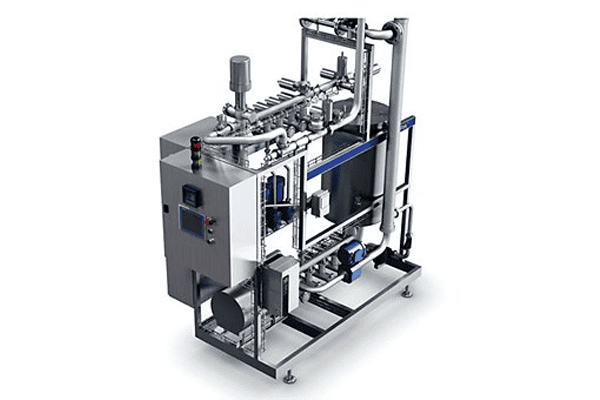I. Cleaning in Place Technology: The Invisible Guardian of Beverage Production
In beverage filling operations, equipment cleaning efficiency directly determines production line profitability. Traditional manual cleaning consumes 30% of effective production time on average, while fully automated CIP (Cleaning in Place) systems reduce cleaning time to 1/5 of conventional methods, alongside achieving 40% energy consumption reduction.
As a manufacturer with 20 years of expertise in beverage equipment R&D, our CIP systems ensure precision through four core parameter controls:
-
Intelligent Temperature Regulation (±0.5°C accuracy)
-
Dynamic Flow Balancing (5-30m³/h adjustable range)
-
Real-Time Concentration Monitoring (automatic compensation via conductivity sensors)
-
Optimized Contact Time (≤3-second error in sequential control)

II. Five Technological Breakthroughs of CIP Systems
1. Closed-Loop Parameter Control Architecture
A three-dimensional cleaning parameter matrix powered by PLC and HMI interfaces:
-
Temperature Dimension: Auto-matching optimal temperatures for residues (e.g., 65-75°C for lipids, 45-55°C for proteins)
-
Hydrodynamic Dimension: Turbulent flow design (Reynolds number >3000) ensures full pipeline coverage
-
Chemical Dimension: Automatic adjustment of cleaning agents (NaOH concentration controlled at 0.1% precision)
2. Dual-Mode Cleaning Strategies
-
Standard Cleaning Mode (post-production “normal fouling”):
-
Cycle: Auto-triggered after production
-
Process: Pre-rinse (3min) → Alkaline wash (15min) → Intermediate rinse (5min) → Acid wash (10min) → Final rinse (7min)
-
-
Formula Transition Mode:
-
Customized programs (e.g., enhanced acid wash when switching from carbonated drinks to juice)
-
ATP bioluminescence detection (0.1 RLU sensitivity) for residue verification
-
3. Energy-Saving Technology Cluster
-
Heat recovery system: 85% reuse of residual thermal energy
-
Water recycling module: >90% water reuse rate
-
Chemical dosing optimization: 15-20% agent consumption reduction
III. Triple Value Proposition of CIP Systems
1. Quantifiable Economic Benefits
-
Annual cost-saving model:
(Traditional cleaning time - CIP time) × Daily batches × Hourly output value
Case study (juice factory):-
Traditional: 2.5 hours/batch × 3 batches/day
-
CIP: 0.5 hours/batch × 3 batches/day
-
Annual revenue gain: (2 hours×3 batches)×300 days×¥8,000/hour = ¥14.4 million
-
2. Enhanced Food Safety Compliance
-
Microbial control standards:
-
Coliforms: <1 CFU/100cm²
-
Yeast/mold: <10 CFU/cm²
-
-
Certifications:
-
FDA 21 CFR Part 11
-
ISO 22000:2018
-
3. Production Flexibility Upgrade
-
Formula changeover completed within 15 minutes
-
Supports rapid transition across 120+ beverage recipes
IV. Industry-Specific Applications
1. Carbonated Beverage Lines
-
Challenge: Sugar crystallization-induced pipe clogging
-
CIP solution:
-
60°C pre-rinse for sugar dissolution
-
0.5% nitric acid circulation
-
2. Dairy Filling Systems
-
Challenge: Protein-denatured biofilms
-
CIP solution:
-
Phased temperature control (50°C alkaline → 40°C acid)
-
Rotary spray balls (99.8% coverage rate)
-
3. Craft Brewing Equipment
-
Challenge: Tartrate deposits
-
CIP solution:
-
Periodic hot water flush (80°C×30min)
-
EDTA-based chelating treatment
-
V. CIP System Selection Guide
1. Key Parameter Comparison
| Metric | Basic | Advanced | Professional |
|---|---|---|---|
| Flow accuracy | ±5% | ±2% | ±0.5% |
| Temp. fluctuation | ±3°C | ±1°C | ±0.5°C |
| Program storage | 10 profiles | 50 profiles | Unlimited |
| Data traceability | 7 days | 30 days | Cloud-based |
2. Selection Decision Tree
-
Daily output <5 tons → Modular mobile CIP
-
5-20 tons/day → Pipeline-integrated system
-
20 tons/day → Customized central CIP station
VI. Future Trends in CIP Technology
-
AI-Predictive Cleaning
Machine learning optimizes parameter combinations using historical data -
Digital Twin Verification
Virtual simulations pre-validate cleaning efficacy -
Carbon-Neutral Solutions
Biodegradable agents + solar-powered operations
Redefining CIP’s Strategic Value
In today’s hyper-competitive beverage industry, intelligent CIP systems have evolved from “cost centers” to “profit drivers.” Selecting a cleaning solution that aligns with production processes is now a strategic imperative. Contact our engineering team to request your “Beverage Line Cleaning Efficiency Diagnostic Report” for customized CIP planning.

